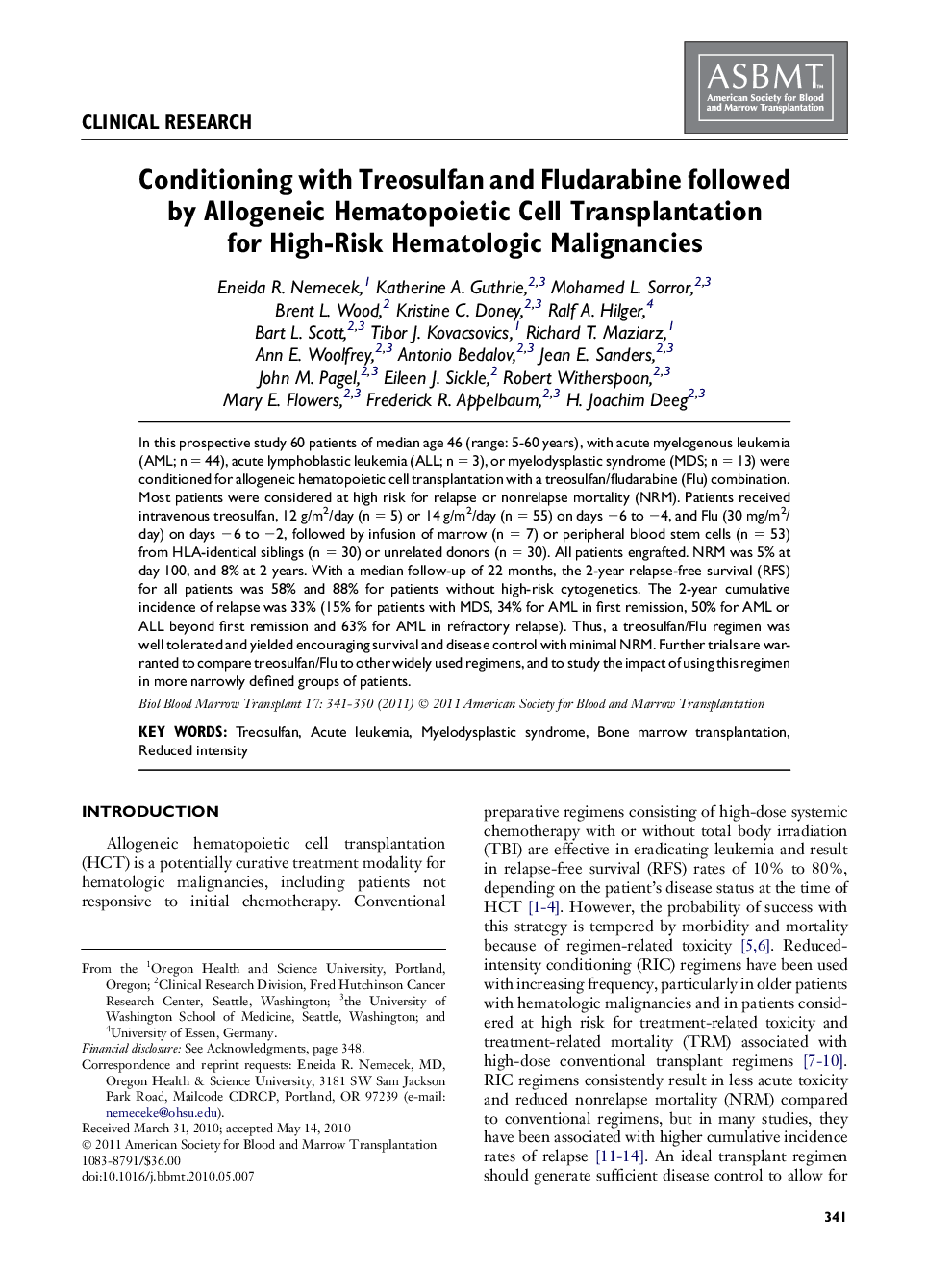| کد مقاله | کد نشریه | سال انتشار | مقاله انگلیسی | نسخه تمام متن |
|---|---|---|---|---|
| 2103564 | 1546323 | 2011 | 10 صفحه PDF | دانلود رایگان |

In this prospective study 60 patients of median age 46 (range: 5-60 years), with acute myelogenous leukemia (AML; n = 44), acute lymphoblastic leukemia (ALL; n = 3), or myelodysplastic syndrome (MDS; n = 13) were conditioned for allogeneic hematopoietic cell transplantation with a treosulfan/fludarabine (Flu) combination. Most patients were considered at high risk for relapse or nonrelapse mortality (NRM). Patients received intravenous treosulfan, 12 g/m2/day (n = 5) or 14 g/m2/day (n = 55) on days −6 to −4, and Flu (30 mg/m2/day) on days −6 to −2, followed by infusion of marrow (n = 7) or peripheral blood stem cells (n = 53) from HLA-identical siblings (n = 30) or unrelated donors (n = 30). All patients engrafted. NRM was 5% at day 100, and 8% at 2 years. With a median follow-up of 22 months, the 2-year relapse-free survival (RFS) for all patients was 58% and 88% for patients without high-risk cytogenetics. The 2-year cumulative incidence of relapse was 33% (15% for patients with MDS, 34% for AML in first remission, 50% for AML or ALL beyond first remission and 63% for AML in refractory relapse). Thus, a treosulfan/Flu regimen was well tolerated and yielded encouraging survival and disease control with minimal NRM. Further trials are warranted to compare treosulfan/Flu to other widely used regimens, and to study the impact of using this regimen in more narrowly defined groups of patients.
Journal: - Volume 17, Issue 3, March 2011, Pages 341–350